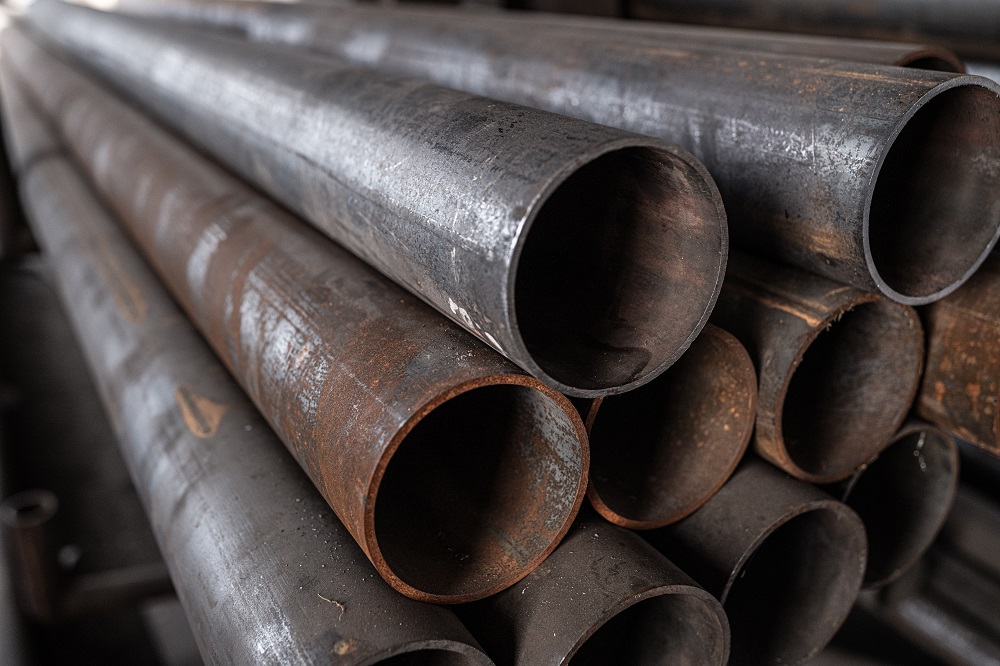Known to contribute substantial material waste, corrosion causes practical and quality control issues in metalworking. Metal is susceptible to environmental degradation throughout every phase of production — as raw workpieces in transit from supplier to manufacturer, during storage, and even as finished parts ready for end-users. Once signs of corrosion appear, the material’s days may be numbered, if not already expired — and mitigation or replacement is expensive.
According to NACE International, the total cost of corrosion damage across the globe adds up to an estimated $2.5 trillion every year. That’s why preventing rust and corrosion are some of the most effective ways to reduce operating costs.
Corrosion inhibiting fluids have long played a critical role in most manufacturing operations, protecting workpieces through the trials of transit and storage. Traditional corrosion inhibitors, however, focus only on this one purpose, with formulas designed for short-term, long-term, and specific environmental conditions.
Newer generations of corrosion inhibitors go far beyond transit and storage: They can also help streamline operations, increase throughput, and provide even longer-lasting protection. In fact, the WEDOLiT™ catalog of corrosion inhibitors has pioneered many of these advances.
Here are some of the qualities to expect from next-generation rust prevention:
Environmentally Friendly Formulas
Traditional corrosion inhibitor fluids can be toxic for the environment and people, largely because of the high quantities of volatile organic compounds (VOCs) they release into the atmosphere. High VOC formulations contribute to increased air pollution and unpleasant shop environments.
Next-generation corrosion inhibitors, such as those in the WEDOLiT line, are low- or VOC-free, in accordance with European regulations. In addition to improving air quality, the environmentally friendly formulations have higher flashpoints, which promotes a safer shop environment and reduces the release of organic compounds into the atmosphere.
Faster Dewatering
Many next-generation corrosion inhibitors feature higher hydrophobic characteristics, which reduce dewatering times. For example, WEDOLiT AS 1012, designed for short-term corrosion prevention, includes surface-active substances that displace water and emulsions faster than competing specialized dewatering formulas. In one case study, a customer cut dewatering time in half, even on parts with complex geometries where water could potentially collect. AS 1012 also extended corrosion protection to several weeks longer than the customer’s previous dewatering rust preventative.
High-Quality, Multi-Purpose Capabilities
In addition to improving dewatering speed, many next-generation corrosion inhibitors are formulated to replace and consolidate various products into a single solution. For example, many WEDOLiT corrosion inhibitors offer long-term corrosion protection and include enough lubricity to effectively serve as forming fluids. Then there are prelubes like WEDOLiT N 22-3, which is a forming fluid and coolant that offers substantial corrosion protection and can significantly slash production costs.
Other products, including WEDOLiT AW 8321, combine parts cleaning with corrosion protection, washing dirt and contaminants off of finished parts while also creating a protective film to prevent rust.
These advanced, multi-purpose formulations improve productivity by reducing the number of products and steps needed in an operation. Consolidating needs into one product also saves money by reducing labor utilization and consuming less fluid.
Optimized for Specific Manufacturing Processes
Many multi-purpose formulations are optimized for specific manufacturing processes. Typically, corrosion inhibitors that combine different specialty fluids and production steps into one product are often a response to the needs of a specific industry — especially automotive and other stamped part manufacturers.
These fluids can also help manufacturers innovate and streamline the way they produce parts. When enough industry leaders achieve a higher level of productivity, it creates new industry standards, setting the stage for greater innovations.
Superior Performance
Many next-generation corrosion inhibitors perform better than traditional formulas and other corrosion prevention methods. For example, vapor corrosion inhibitor (VCI) packaging is a type of packaging that protects metals from corrosion with a thin, invisible seal over the surface. In one case study with an automotive manufacturer, WEDOLiT product was shown to outperform VCI packaging. While the VCI packaging left parts prone to rusting during overseas transit, one WEDOLiT corrosion inhibitor coated the parts so effectively, that it reduced customer complaint rates to less than 10 percent.
A Rust-Free Future
As workpieces become more expensive and production schedules become more demanding, next-generation corrosion inhibitors can help job shops control operating costs and remain as efficient as possible. These advanced formulas do far more than just prevent corrosion — they streamline manufacturing processes and help operations redefine their standards of speed and excellence.
These formulas are also crucial for remaining compliant with European environmental regulations. To learn more about WEDOLiT and the benefits of next-generation corrosion for your operation, email us at info@masterfluids.com.

